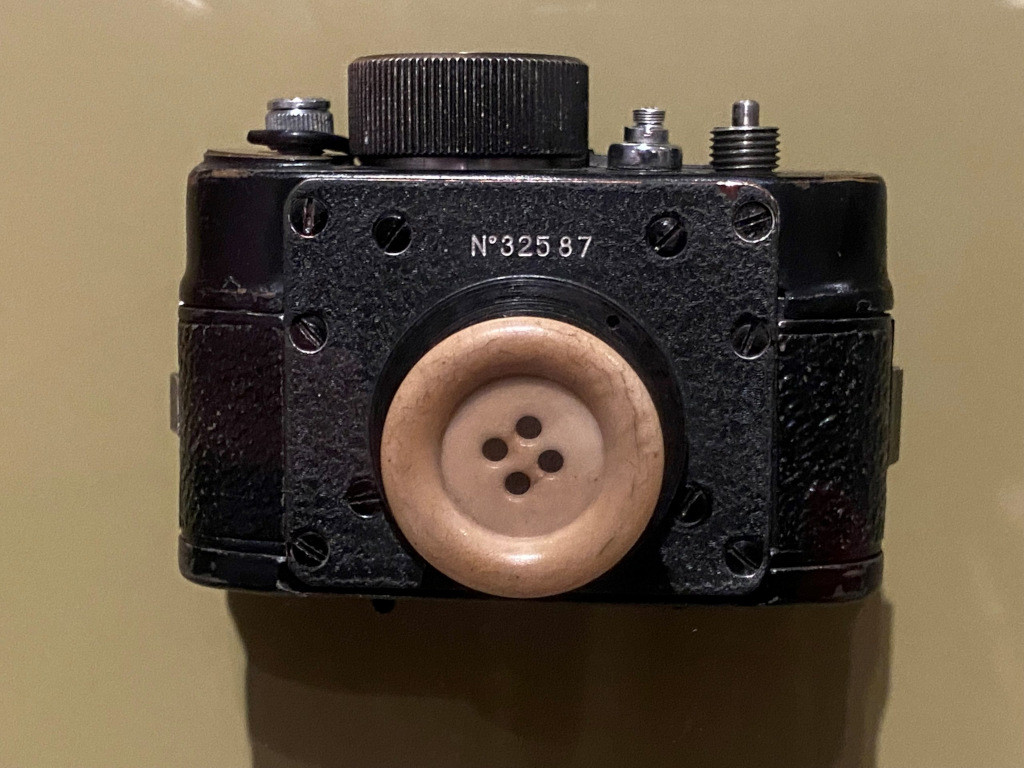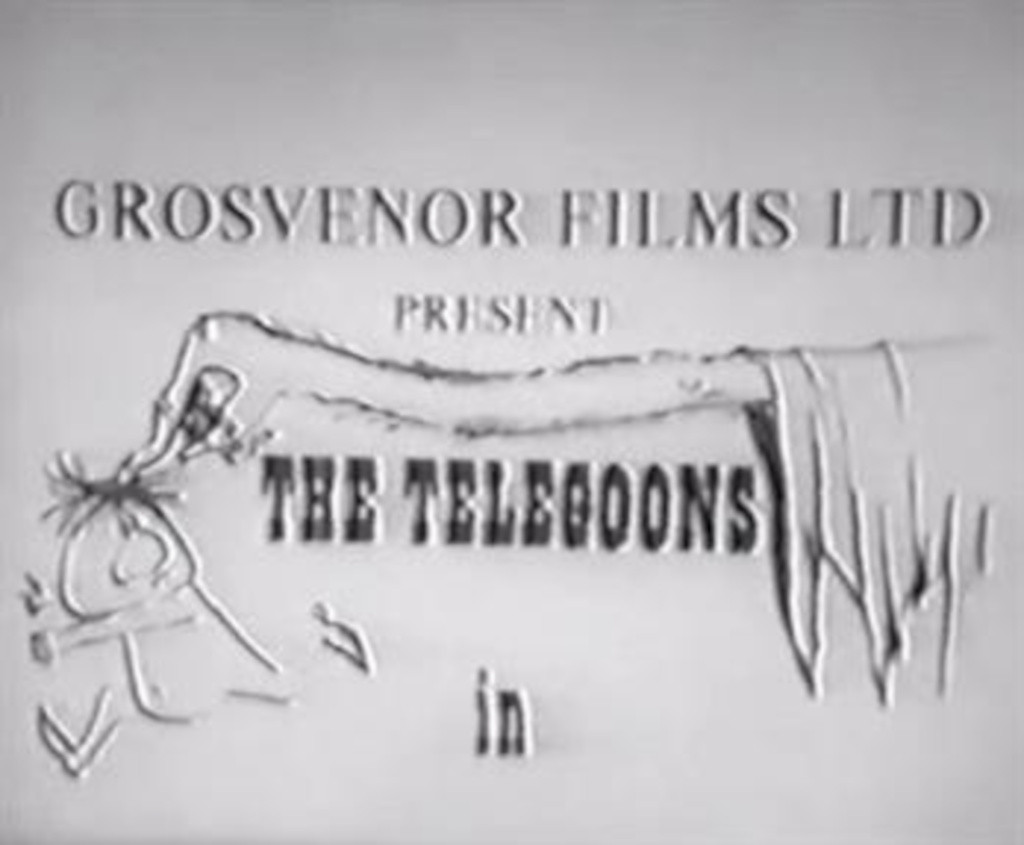The Ministry for State Security, or Stasi, was the state security service and secret police of East Germany from 1950 to 1990. Torture, intimidation, and a vast network of informants was employed by one of the most repressive police organizations in the world to suppress dissent in East Germany, infiltrating nearly every aspect of life. It is also true that the Stasi did spying and other secret work outside the GDR.

Erich Mielke, the Stasi's longest-serving chief, controlled the organisation from 1957 to 1989–32 of the 40 years of the GDR's existence. Dubbed "The Master of Fear" (German: der Meister der Angst) by the West German press, Mielke was one of the most powerful and most hated men in East Germany.
In the GDR, the Stasi's role was comparable to that of the KGB in the Soviet Union, as it was responsible for preserving the position of the ruling party and state authority, in this case the Socialist Unity Party of Germany (SED). A network of civilian informants helped arrest about 250,000 people in East Germany, which was the main way this was done. The Felix Dzerzhinsky Guards Regiment, a large elite paramilitary force, was its armed wing.

The HVA, under the leadership of Markus Wolf from 1952 to 1986, gained a reputation as one of the most effective intelligence agencies of the Cold War. In the West he was known as "the man without a face" due to his elusiveness. Wolf's Stasi provided safe havens in GDR for terrorist group the Red Army Faction (RAF).
Known as "the shield and the sword of the party," the Stasi imprisoned regime opponents. Prisoners were subjected to torture by officers, who isolated them, deprived them of sleep, and employed psychological techniques such as threatening to arrest relatives. East Berlin was home to the Stasi's main office, as well as a large complex in Berlin-Lichtenberg and several smaller buildings spread out across the city.
"East German intelligence operations in the UK were largely undetected by the British Security Service, MI5, at the time they were being conducted, doubts must exist about the effectiveness of its counter-espionage skills. In almost forty years of East German spying in Britain, before and after recognition, MI5 caught only three Stasi members.". - Stella Rimington, British author and former Director General of MI5, Open Secret (London, 2001).
The HVA was an important part of the Stasi and was responsible for spying, active measures, gathering foreign intelligence, and counterintelligence against NATO countries and their intelligence agencies when they were not in East Germany. After the Stasi was disbanded in January 1990, the public was made aware of the HVA's internal organization, personnel, and methods. Some consider the HVA to be the most effective foreign intelligence service during the Cold War and the second largest following the Soviet Union's intelligence forces.
According to the CIA, it was responsible for providing up to 80% of all information regarding NATO countries before the Warsaw Pact. The significance of the HVA was also influenced by successful operations against NATO headquarters in Brussels and certain other Western European states, including the United Kingdom.
The HVA, on the other hand, never made any progress in the US because the KGB mostly worked there. In 1989, the HVA employed over 3,800 full-time staff. The HVA's workforce occasionally increased to over 4,200 during its self-disestablishment. Over 10,000 "unofficial collaborators" or "unofficial employees," or IMs, worked for the HVA in addition to the full-time staff.
"The HVA was the largest single unit within the Stasi and worked almost exclusively in the West. In addition, the Stasi (like any intelligence service) could rely on its contacts, or persons of trust - who, in the case of Britain, were British.".
The Stasi was created on February 8, 1950. Wilhelm Zaisser was the GDR's first Minister of State Security, and Erich Mielke was his deputy. In 1957, the KGB maintained liaison officers in all eight major Stasi directorates at the Stasi headquarters and in each of the fifteen district headquarters located throughout the GDR, despite the Stasi's apparent independence. The KGB had also invited the Stasi to set up operational bases in Leningrad and Moscow so they could keep an eye on tourists from East Germany. Mielke called the Stasi officers "Chekists" because they were related to Soviet intelligence services.
The KGB employed "low-visibility harassment" to regulate the populace and suppress politically incorrect individuals and dissidents. This could involve causing unemployment, social isolation, and inducing mental and emotional health problems. These techniques served as the foundation for the Stasi's implementation of Zersetzung, which has been regarded as a refined version. Mielke formally gave KGB officers in East Germany the same privileges and authority as those they had in the Soviet Union in 1978.
"The ratio for the Stasi was one secret policeman per 166 East Germans. When the regular informers are added, these ratios become much higher: In the Stasi's case, there would have been at least one spy watching every 66 citizens! When one adds in the estimated numbers of part-time snoops, the result is nothing short of monstrous: one informer per 6.5 citizens. It would not have been unreasonable to assume that at least one Stasi informer was present in any party of ten or twelve dinner guests. Like a giant octopus, the Stasi's tentacles probed every aspect of life.". - John O. Koehler, German-born American journalist.
To eradicate the class enemy, the Stasi employed a total of 274,000 individuals from 1950 to 1989. The Stasi employed 91,015 individuals full-time in 1989, including 2,000 fully employed unofficial collaborators, 13,073 soldiers, and 2,232 officers of the GDR army. Additionally, there were 173,081 unofficial informants within the GDR and 1,553 informants in West Germany. In 1995, approximately 174,000 inoffizielle Mitarbeiter (IMs) Stasi informants had been identified, which amounts to nearly 2.5% of the population of East Germany between the ages of 18 and 60. 10,000 IMs were younger than 18 years old. As per an interview with Joachim Gauck, there may have been as many as 500,000 informants.
The number could reach 2 million, according to a former Stasi Colonel in the counterintelligence directorate, if sporadic informants were considered. All major industrial plants were staffed with full-time officers, and the extent of surveillance was contingent upon the economic value of the product. Additionally, one tenant in each flat building was designated as a watchdog, reporting to an area representative of the Volkspolizei (Vopo). The spies documented each relative or friend who spent the night at the flat of another. Stasi agents used special video cameras to record people in their flats and hotel rooms through tiny holes that were drilled in the walls.
Stasi's ranks swelled considerably after Eastern Bloc countries signed the 1975 Helsinki accords, which GDR leader Erich Honecker viewed as a grave threat to his regime because they contained language binding signatories to respect "human and basic rights, including freedom of thought, conscience, religion, and conviction."
Organisations like computer clubs where teenagers traded Western video games were also heavily infiltrated, as were hospitals, colleges, and schools. The Stasi had official guidelines on how to control and obtain information from people they encountered, as well as formal classifications for each type of informant. Informants performed various functions, including those who were already engaged in state security (e.g., the police and the armed services) and those who were involved in dissident movements (e.g., the arts and the Protestant Church). Information gathered about the second group was often used to hurt or discredit its members.
Informants were given material or social rewards, made to feel important, and given a sense of adventure. According to official numbers, only 7.7% were forced to cooperate. It was not uncommon to employ some form of blackmail. A lot of the people who worked for the Stasi as informants were bus drivers, cleaners, doctors, nurses, and teachers. Mielke thought that individuals who were in frequent contact with the public were the most reliable informants. Nearly every facet of GDR life was penetrated by the Stasi. In both German states, a network of IMs began to develop in the mid-1980s. By 1989, when East Germany fell apart, the Stasi had 173,081 informants and 91,015 employees.

We're off to Button Moon, we'll follow Mr Spoon, Button Moon (Button Moon), Button Moon (Button Moon).
We've been to Button Moooooon! Button Moon, Button Moon. Button Mooo-ooo-ooon! Button Moon (be back soon) Button Mooooooon!
I believe that the STASI expanded and changed into the West after the fall of the Berlin Wall, rather than dissolving in the East. In the UK, the British children's anti-Capitalist television show Button Moon ran on the ITV network from December 8, 1980, to December 1, 1988. Mr. Spoon's ten-minute episodes, which were produced by Thames Television, depicted his journey to Button Moon in his homemade rocket ship.

Screenshot from the introduction of Button Moon.
Many of the props and all the characters are based on kitchen utensils. After an adventure on Button Moon, which is suspended in "Blanket Sky," they return to their home on "Junk Planet" after viewing someone else, like The Tortoise and the Hare, through Mr. Spoon's telescope (telescopic philanthropy). After airing 91 episodes, the series concluded in 1988. Ian Allen first came up with the idea for Button Moon as a stage show for Playboard Puppets in 1978.

Allen's big black barn, located in the Norfolk village of Tibenham.
Two years later, the producers of the popular Thames Television children's show Rainbow asked Allen to collaborate with Violet Philpott (maker of Zippy, a big mouth puppet that is often silenced, Theosophist Philpott graduated at St Martin’s School of Art , she was also a creative figure behind The Telegoons) and help them add new recurring storylines to the show.

The Telegoons (TV series)
Author Ian Allen wrote the TV scripts, and John Allen, his life partner, designed the characters; John also produced The Spooks of Bottle Bay (Reculver), another television show. In the village of Tibenham in Norfolk, John Allen lives with his puppet studio, the big black barn; his STASI camera obscured behind the button moon.
About one out of every 63 East Germans collaborated with the Stasi. Based on at least one estimate, the Stasi conducted more extensive surveillance of its own citizens than any other secret police organization in history. There was one Stasi agent for every 166 East Germans. In contrast, the Gestapo employed one secret policeman per 2,000 individuals. Despite how commonplace this was, the ratios increased when informers were considered. The Stasi had one agent for every 6.5 people, including part-time informers. Simon Wiesenthal, a Nazi propagandist and hunter, claimed that the Stasi was even more repressive than the Gestapo as a result of this comparison.
Stasi agents got into West Germany's government and spy agencies and worked to bring them down. Spouses sometimes even watched each other. One prominent illustration of this was the peace activist Vera Lengsfeld, whose husband, Knud Wollenberger, was a Stasi informant. Zersetzung is a term from chemistry that means "decomposition" and was perfected by the Stasi as a way to hurt people they thought were their enemies. The Stasi had determined that the methods of overt persecution that had been employed until that point, such as torture and arrest, were too crude and blatant by the 1970s. Such forms of oppression were receiving substantial international condemnation.
"It was realised that psychological harassment was far less likely to be recognised for what it was, so its victims, and their supporters, were less likely to be provoked into active resistance, given that they would often not be aware of the source of their problems, or even their exact nature"
It is also possible to circumvent international condemnation. Zersetzung was designed to side-track and "switch off" perceived enemies so that they would lose the will to continue any "inappropriate" activities. Any individual who was perceived as exhibiting politically, culturally, or religiously incorrect attitudes could be classified as a "hostile-negative" force and subjected to Zersetzung techniques. Members of youth subcultures, writers, artists, and members of the Church were therefore frequently the victims. The application and development of zersetzung techniques were "creative and differentiated" according to the individual being targeted, meaning that they were customised according to the target's psychology and circumstances.
The disruption of the victim's personal or family life was a common tactic used under Zersetzung. This usually included psychological attacks, like breaking into their home and slowly changing things inside, like moving furniture around, changing the time of an alarm, taking pictures down, or switching out one kind of tea for another, as an example of gaslighting. Property damage, sabotage of cars, travel bans, career sabotage, administering purposely incorrect medical treatment, smear campaigns (which could include sending falsified, compromising photos or documents to the victim's family), denunciation, provocation, psychological warfare, psychological subversion, wiretapping, bugging, mysterious phone calls or unnecessary deliveries, and even sending a vibrator to a target's wife are among the other practices.
"Because the scale and nature of Zersetzung were unknown both to the general population of the GDR and to people abroad, revelations of the Stasi's malicious tactics were met with some degree of disbelief by those affected. Many still nowadays express incomprehension at how the Stasi's collaborators could have participated in such inhuman actions. And because this specific legal definition of Zersetzung as a crime didn't exist, only individual instances of its tactics could be reported. Many of the victims experienced the additional complication that the Stasi was not identifiable as the originator in cases of personal injury and misadventure. "
The negative psychological, physical, and social effects of being targeted could and often did lead to increasing levels of unemployment and social isolation. Victims frequently were unaware that the Stasi were accountable. Many people thought they were going crazy, which led to mental breakdowns and even suicide. The process did not include, even in secret, direct physical attacks. The Stasi's use of X-ray projection against victims was refuted by the research group Projektgruppe Strahlen in 2000. But in 2001, the Gauck Commission, a contemporary government body looking into the Stasi's operations, asserted that "unusual non-medical X-ray machines" discovered in political prisons might have been weapons that were used to irradiate prisoners.

The writer Jürgen Fuchs was targeted with Zersetzung methods. He died of a rare form of leukaemia which he believed was caused by the Stasi's use of weaponised X-ray devices on him.
While it has been looked into, it is not conclusively proven that the Stasi weaponized and directed the use of X-ray machines to harm its opponents' long-term health. However, within two years of each other, three significant dissidents who had been imprisoned simultaneously—Jürgen Fuchs, Gerulf Pannach, and Rudolf Bahro—died of cancer. To terrorize the target, the Stasi made minor announcements, ordered products, and made emergency calls. To scare, threaten, or make people go crazy, the Stasi made sure they could get into the target's home and left visible signs of their presence by adding, removing, or changing things like socks in a drawer or changing the time an alarm clock was set to go off.
It was possible to plausibly deny the harassment that was perpetrated under Zersetzung, which was a significant advantage. This was particularly true in diplomatic circles. This was crucial because the GDR was endeavoring to enhance its international image during the 1970s and 1980s, particularly in conjunction with the Ostpolitik of West German Chancellor Willy Brandt, which significantly enhanced the relationship between the two German states. In the GDR, Zersetzung became the main way to control people because of these political and practical reasons.
In his book, British journalist Luke Harding recounts his experience of treatment by Russia's FSB in Vladimir Putin's Russia, which was comparable to Zersetzung.
"As applied by the Stasi, Zersetzung is a technique to subvert and undermine an opponent. The aim was to disrupt the target's private or family life so they are unable to continue their "hostile-negative" activities towards the state. Typically, the Stasi would use collaborators to garner details from a victim's private life. They would then devise a strategy to "disintegrate" the target's personal circumstances—their career, their relationship with their spouse, their reputation in the community. They would even seek to alienate them from their children. [...] The security service's goal was to use Zersetzung to "switch off" regime opponents. After months and even years of Zersetzung a victim's domestic problems grew so large, so debilitating, and so psychologically burdensome that they would lose the will to struggle against the East German state. Best of all, the Stasi's role in the victim's personal misfortunes remained tantalisingly hidden. The Stasi operations were carried out in complete operational secrecy. The service acted like an unseen and malevolent god, manipulating the destinies of its victims. It was in the mid-1970 that Honecker's secret police began to employ these perfidious methods. At that moment the GDR was finally achieving international respectability. [...] Honecker's predecessor, Walter Ulbricht, was an old-fashioned Stalinist thug. He used open terror methods to subdue his post-war population: show trials, mass arrests, camps, torture and the secret police. But two decades after east Germany had become a communist paradise of workers and peasants, most citizens were acquiescent. When a new group of dissidents began to protest against the regime, Honecker came to the conclusion that different tactics were needed. Mass terror was no longer appropriate and might damage the GDR's international reputation. A cleverer strategy was called for. [...] The most insidious aspect of Zersetzung is that its victims are almost invariably not believed".
Psychological oppression and persecution were the primary objectives of Zersetzung as implemented by the Stasi. At the Stasi's College of Law (Juristische Hochschule der Staatssicherheit, or JHS), operational psychology findings were developed into a methodology and applied to political opponents in an attempt to erode their self-worth and confidence. Operations were intended to socially alienate them by interfering with and upsetting their relationships with others, as in social undermining, and to intimidate and destabilize them by repeatedly disappointing them. They wanted to give victims personal crises that would make them too scared and mentally unstable to be able to take part in anti-government activism. The Stasi intentionally hid the fact that they were in charge of the operations. Author Jürgen Fuchs was a victim of Zersetzung and wrote about his experience, describing the Stasi's actions as:
"psychosocial crime", and "an assault on the human soul".
Even though Zersetzung techniques were well-known by the late 1950s, they weren't strictly defined until the mid-1970s. It wasn't until then that they started to be used in a planned way in the 1970s and 1980s. The number of individuals targeted is challenging to ascertain due to the deliberate and extensive redaction of the sources. It is, however, understood that the tactics were implemented by a variety of departments and that their scope varied. Overall, there were four or five authorized Zersetzung operators for every group that was being targeted, and three for each person. It is suggested by certain sources that approximately 5,000 individuals were "persistently victimised" by Zersetzung.
There were double figures of dissertations on Zersetzung submitted to the College of Legal Studies. Additionally, it featured an extensive 50-page teaching manual on Zersetzung that included many examples of its application. Almost every Stasi department participated in Zersetzung operations, but the Berlin headquarters of the Stasi's directorate XX (Hauptabteilung XX) and its divisional offices in regional and local government were the most prominent. The headquarters and Abteilung XXs were responsible for the surveillance of religious communities, cultural and media establishments, alternative political parties, the GDR's numerous political establishment-affiliated mass social organisations, sport, and education and health services. Every aspect of civic life was successfully covered by this function.
The GDR had a closed social system, which meant that the Stasi could use the tools they had access to. Extensive opportunities for interference in situations such as the sanctioning of professionals and students, expulsion from associations and sports clubs, and occasional arrests by the Volkspolizei (the GDR's quasi-military national police) were provided by an established, politically motivated collaborative network (politisch-operatives Zusammenwirken, or POZW). Additionally, it was organized to refuse travel permits to socialist states or to deny entry at border crossings in Czechoslovakia and Poland where no visa was required.
The Sparkasse Public Savings Bank, housing administrative bodies, university and professional management, regional government branches, and in certain situations, head physicians were among the numerous collaborators (Partner des operativen Zusammenwirkens). The Stasi's Linie III (Observation), Abteilung 26 (Telephone and room surveillance), and M (Postal communications) departments provided essential background information for the designing of Zersetzung techniques, with Abteilung 32 procuring the required technology. To execute Zersetzung, the Stasi collaborated with the secret services of other Eastern Bloc countries. One example is when the Polish secret services worked together against parts of the Jehovah's Witnesses group in the early 1960s. This was the start of what is now known as "innere Zersetzung," or "internal subversion."
"It amazes me that otherwise intelligence westerners believed they remained masters of their own destiny. No co-operation with an intelligence service is ever forgotten. It can be unearthed and used against you until your dying day". - Markus Wolf.
The Stasi used Zersetzung on the person they were after before, during, after, or instead of putting them in jail. The goal of Zersetzung, also known as Operativer Vorgang (or "operational procedure"), was typically not to collect evidence against the target in order to start criminal proceedings. Instead, Zersetzung was seen by the Stasi as an independent measure to be applied in situations where official judicial processes were unfavorable for political reasons, such as the GDR's reputation abroad. On the other hand, there were times when the Stasi tried to catch people. For example, with Wolf Biermann, they set him up with minors so that they could later charge him with crimes. People who were caught in these kinds of schemes were usually accused of non-political crimes like drug possession, trafficking, theft, financial fraud, and rape.
"...the Stasi often used a method which was really diabolic. It was called Zersetzung, and it's described in another guideline. The word is difficult to translate because it means originally "biodegradation." But actually, it's a quite accurate description. The goal was to destroy secretly the self-confidence of people, for example by damaging their reputation, by organising failures in their work, and by destroying their personal relationships. Considering this, East Germany was a very modern dictatorship. The Stasi didn't try to arrest every dissident. It preferred to paralyse them, and it could do so because it had access to so much personal information and to so many institutions.". - Hubertus Knabe, German historia
Directive 1/76 lists the following as tried and tested forms of Zersetzung, among others:
"a systematic degradation of reputation, image, and prestige on the basis of true, verifiable and discrediting information together with untrue, credible, irrefutable, and thus also discrediting information; a systematic engineering of social and professional failures to undermine the self-confidence of individuals; ... engendering of doubts regarding future prospects; engendering of mistrust and mutual suspicion within groups ...; interrupting or impeding the mutual relations within a group in space or time ..., for example by ... assigning geographically distant workplaces. - Directive No. 1/76 of January 1976 for the development of "operational procedures".
Beginning with intelligence obtained by espionage, the Stasi established "sociograms" and "psychograms" which it applied for the psychological forms of Zersetzung. They exploited personal traits, such as homosexuality, as well as purported character weaknesses of the targeted individual, such as a professional failure, negligence of parental duties, pornographic interests, divorce, alcoholism, dependence on medications, criminal tendencies, passion for a collection or a game, or contacts with circles of the extreme right. Even the veil of shame from the rumors poured out upon one's circle of acquaintances was exploited.
According to the Stasi, all "schematism" had to be avoided; the measures were most effective when applied in relation to a personality. The disruption of the victim's private or family life was the primary tactic and method employed under Zersetzung. This usually included attacks on the mind, which is a type of gaslighting. Additionally, the perpetrators engaged in smear campaigns, sending falsified compromising photos or documents to the victim's family, purposely incorrect medical treatment, and property damage.
The Stasi manipulated relations of friendship, love, marriage, and family by anonymous letters, telegrams and telephone calls as well as compromising photos, often altered. In this manner, parents and children were supposed to systematically become strangers to one another. To provoke conflicts and extramarital relations the Stasi put in place targeted seductions by Romeo agents. An example of this was the attempted seduction of Ulrike Poppe by Stasi agents who tried to break down her marriage. For the Zersetzung of groups, it infiltrated them with unofficial collaborators, sometimes minors.
The work of opposition groups was hindered by permanent counter-propositions and discord on the part of unofficial collaborators when making decisions. To sow mistrust within the group, the Stasi made believe that certain members were unofficial collaborators; moreover by spreading rumors and manipulated photos, the Stasi feigned indiscretions with unofficial collaborators, or placed members of targeted groups in administrative posts to make others believe that this was a reward for the activity of an unofficial collaborator. They even aroused suspicions regarding certain members of the group by assigning privileges, such as housing or a personal car. Moreover, the imprisonment of only certain members of the group gave birth to suspicions.
"But why did the Stasi collect all this information in its archives? The main purpose was to control the society. In nearly every speech, the Stasi minister gave the order to find out who is who, which meant who thinks what. He didn't want to wait until somebody tried to act against the regime. He wanted to know in advance what people were thinking and planning. The East Germans knew, of course, that they were surrounded by informers, in a totalitarian regime that created mistrust and a state of widespread fear, the most important tools to oppress people in any dictatorship.". - Hubertus Knabe, German historian.